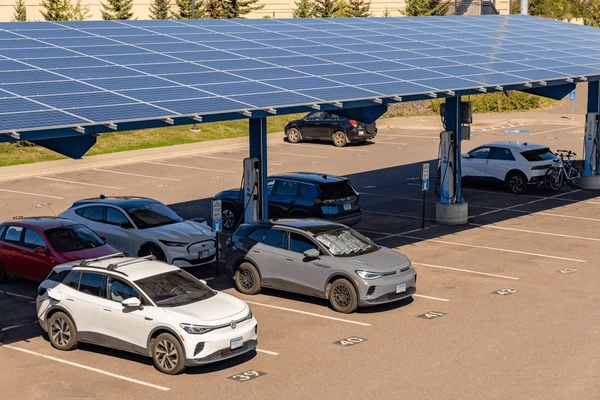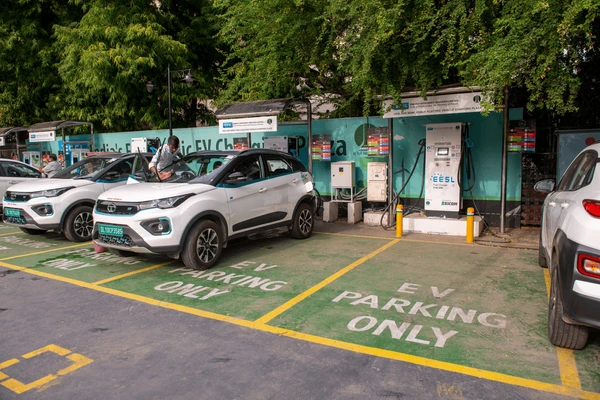India’s electric mobility journey is entering its most transformative phase yet with the Government’s EV Infrastructure Plan 2025–26. Designed to strengthen the nation’s charging ecosystem, this plan aims to make EV ownership more convenient, affordable, and sustainable. From setting up high-speed public chargers to integrating renewable energy sources into the grid, every initiative contributes toward India’s mission to achieve 30% EV adoption by 2030.
This blog dives deep into the key highlights of India’s EV roadmap—covering the government’s upcoming infrastructure strategies, policy incentives, and their potential to shape the future of clean mobility across urban and rural India.
The Vision Behind India’s EV Infrastructure Plan 2025–26
The Indian government’s EV vision isn’t just about promoting electric vehicles—it’s about building a self-sustaining ecosystem that supports manufacturing, battery production, and nationwide charging accessibility. Under the National Electric Mobility Mission Plan (NEMMP) and FAME II scheme, the government continues to focus on expanding charging stations and battery-swapping facilities in key cities, highways, and Tier-2 towns.
The Push Toward Clean Mobility
The 2025–26 roadmap emphasizes reducing dependence on fossil fuels while boosting domestic innovation. By integrating solar-powered charging stations, the government is ensuring that the shift to EVs also supports India’s renewable energy goals. The result? Lower emissions, lower running costs, and a cleaner environment.
FAME II & Upcoming FAME III — Policy Pillars Driving EV Growth
The FAME (Faster Adoption and Manufacturing of Hybrid and Electric Vehicles) scheme has been the backbone of India’s EV adoption strategy. While FAME II focused on supporting public transport electrification and private EV subsidies, FAME III (expected in 2025) is anticipated to strengthen the EV infrastructure network across the country.
Key Highlights of FAME II
Under FAME II, over 7,000 public charging stations have been sanctioned across India, along with subsidies for 10 lakh electric two-wheelers and 5 lakh electric three-wheelers. This laid the foundation for a robust charging ecosystem and encouraged manufacturers to develop affordable EVs with higher range capabilities.
What to Expect from FAME III
FAME III is expected to focus on rural expansion, battery recycling infrastructure, and EV financing support. With a focus on improving affordability and accessibility, the scheme may also encourage state-private partnerships to enhance India’s charging grid by 40% within the next two years.
The Expanding EV Charging Network Across India
Charging infrastructure is the heart of EV adoption, and India’s current expansion rate is record-breaking. The Ministry of Power, in collaboration with BEE (Bureau of Energy Efficiency) and NITI Aayog, is setting up 1 charging station every 3 km in urban areas and every 25 km along major highways.
Urban vs. Highway Charging Expansion
Urban charging stations focus on convenience—placed near malls, offices, and public parking. On the other hand, highway charging corridors are being developed across the Delhi–Mumbai Expressway, Bengaluru–Chennai route, and Golden Quadrilateral, enabling inter-city EV travel without range anxiety.
Role of Private Players
Private energy giants like Tata Power, Adani Total Gas, and BPCL are partnering with the government to install fast and ultra-fast chargers nationwide. These partnerships are crucial in meeting the 2025 target of 46,000+ EV chargersacross India.
Smart Charging Technology & Renewable Integration
As India moves toward a digitally connected charging network, smart charging plays a pivotal role. Using IoT and AI, charging systems can now optimize power flow, prevent overloading, and balance grid demand effectively.
Renewable Energy Meets EV Charging
To make the EV transition sustainable, the Government’s EV Infrastructure Plan 2025 emphasizes integrating solar, wind, and bioenergy sources into charging grids. This ensures every charge is not only efficient but also eco-friendly, reducing dependency on coal-based electricity.
Vehicle-to-Grid (V2G) Technology
Emerging V2G systems will allow EVs to supply energy back to the grid during peak hours. The government aims to pilot this technology in metro cities by 2026—making EVs an active participant in India’s smart energy ecosystem.
Challenges in EV Infrastructure Development
Despite rapid progress, India faces a few hurdles that must be overcome for large-scale adoption.

High Initial Investment
Setting up fast-charging stations involves high upfront costs. Land acquisition, import duties on equipment, and limited access to green financing slow down expansion in semi-urban and rural regions.
Standardization & Compatibility Issues
India still lacks uniform charging standards. Different OEMs support varying plug types (CCS2, CHAdeMO, Type-2), which can confuse users. The government aims to finalize a universal charging protocol under BIS by 2025.
Opportunities & Economic Impact of EV Infrastructure Growth
The upcoming EV expansion isn’t just an environmental shift—it’s a massive economic opportunity for India.
Job Creation and Skill Development
With over 10 lakh jobs expected to emerge in battery management, EV maintenance, and energy analytics, the Government’s EV Infrastructure Plan could become a top employment generator by 2026. Institutions like ASDC (Automotive Skill Development Council)are already creating specialized EV courses to support this transition.
Attracting Global Investments
Global EV leaders like Tesla, Hyundai, and BYD have shown renewed interest in India, particularly due to government-backed EV infrastructure incentives. These investments could position India as a global EV hub, competing with China and the EU in the near future.
Environmental Benefits & Long-Term Impact
The Government’s EV Infrastructure Plan 2025–26 is a cornerstone of India’s Net Zero 2070 vision.
By replacing ICE vehicles with EVs powered by clean energy, India could cut CO₂ emissions by over 45 million tonnes annually. Additionally, battery recycling and reuse initiatives will minimize waste and strengthen circular economy practices in the EV sector.
Cities like Delhi, Pune, and Hyderabad are already witnessing improved air quality and reduced noise pollution thanks to rising EV adoption.
Insights on Key Advantages & Limitations
Advantages (Key Strengths)
- Strengthens India’s clean energy transition
- Encourages private investments in infrastructure
- Expands job opportunities in emerging tech fields
- Boosts foreign investor confidence in India’s EV sector
Challenges (Areas to Improve)
- High setup costs for ultra-fast chargers
- Slow policy execution at the state level
- Limited rural charging infrastructure
- Need for standardized EV charger technology
Final Thoughts on India’s EV Future
The Government’s EV Infrastructure Plan 2025–26 is not just a policy—it’s a bold step toward a sustainable and self-reliant India. With an integrated focus on charging accessibility, renewable integration, and public-private partnerships, India is set to become a global frontrunner in electric mobility.
Now is the perfect time for consumers, investors, and innovators to join this movement. As the infrastructure grows, EV ownership will become simpler, smarter, and more rewarding.
👉 Explore more EV insights on our website or check out our latest guides on EV subsidies, charging stations, and EV Accessories to stay ahead in the green mobility revolution.
Latest Posts
- Best Electric Scooters for Women in India 2025 – Stylish, Smart & Sustainable
- Government’s Powerful EV Infrastructure Plan 2025–26: India’s Next Big Leap in Electric Mobility
- BYD EV Cars India 2025 – Powerful Features, Review & Cost Guide
- EV Battery Life Explained: Smart Tips to Improve Lifespan
- EV Safety Guide 2025: Understanding Fire Risks & Effective Solutions



